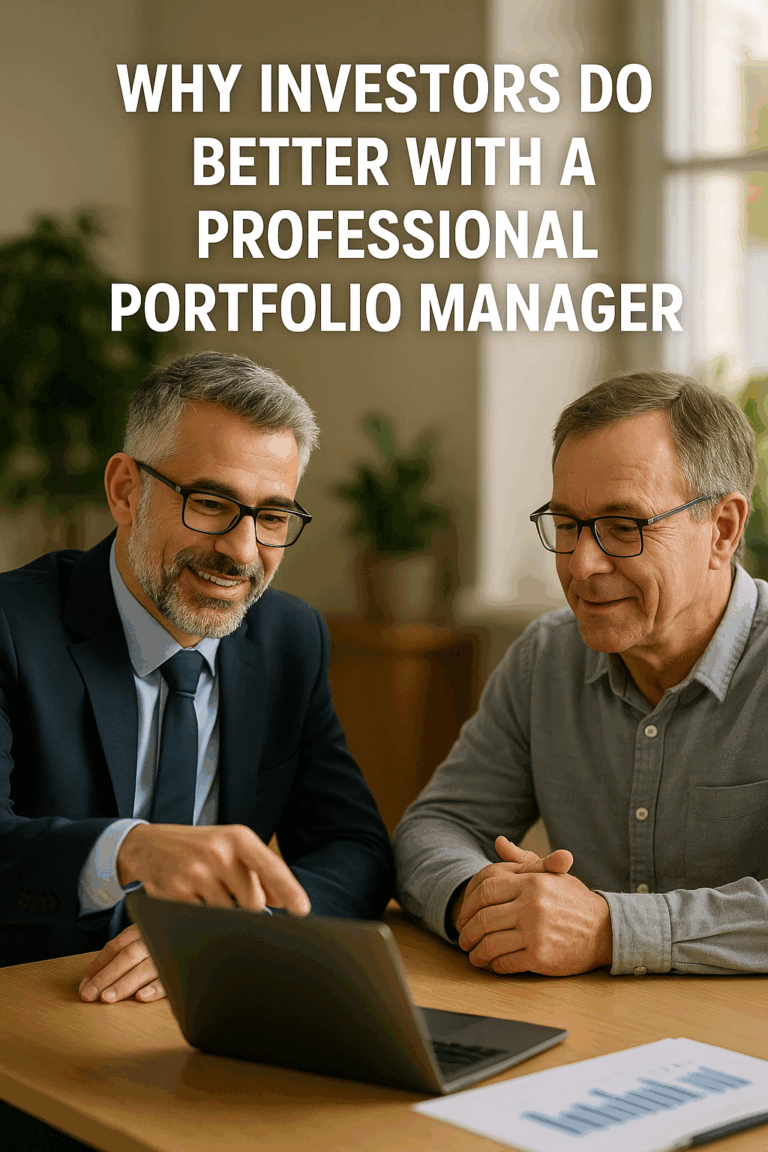When it comes to investing, one of the most common misconceptions is that managing your own portfolio can save you money and deliver similar, if not better, results than hiring a professional. After all, management fees reduce your returns. However, time and again, research and market outcomes reveal a different story: investors who work with a professional portfolio manager tend to achieve better long-term performance and experience greater peace of mind.
Let’s explore why that is, along with key strategies professionals employ that many DIY investors overlook.
- The Power of Rebalancing
What is rebalancing?
Rebalancing is the process of realigning the weightings of a portfolio’s assets to maintain the investor’s original target asset allocation. For example, if your target model is 60% stocks and 40% bonds, but a strong market causes stocks to rise to 70%, a professional manager will sell some of the appreciated stocks and buy more bonds to bring the mix back in line.
Why is this important?
Without regular rebalancing, investors often let emotions drive decisions—holding on to high-performing assets too long or panicking during downturns. Rebalancing enforces discipline, reduces risk, and reinforces the “buy low, sell high” principle.
According to a Vanguard study, rebalancing alone can add 0.35% to 0.50% annually to a portfolio’s return without increasing risk.
- Customized Portfolio Design
Every investor is unique. A good professional doesn’t just pick investments—they design a portfolio tailored to your goals, risk tolerance, and cash needs. That means:
- Risk Tolerance: Professionals assess how much risk you think you can tolerate and compare that to how much you can actually handle based on behavior, experience, and goals.
- Income Needs: Retirees, for example, may need predictable income, which leads to selecting dividend-paying equities or bonds.
- Liquidity Needs: Professionals ensure enough liquid assets are available, so you’re not forced to sell at the wrong times such as during a market dip or unexpected life event. Retail investors can also keep too much cash, which may result in missed investment income. Increasing investment income by 2% can make financial projections look a lot better.
This holistic design helps avoid the common DIY mistake of investing in mismatched products that are either too risky, too illiquid, or not aligned with actual goals.
- Behavioral Coaching: Sticking with the Plan
Perhaps the most valuable service a professional provides is helping clients stay the course. In volatile times—when markets crash or soar—it’s human nature to want to act. Retail investors often:
- Sell during downturns (locking in losses)
- Chase hot sectors or stocks (buying high)
- Abandon plans during uncertainty
By providing education, perspective, and accountability, professionals help you avoid costly mistakes.
- Long-Term Focus and Tactical Adjustments
Professionals are trained to look beyond short-term noise and manage portfolios through full market cycles. They:
- Understand global macroeconomic shifts
- Adjust positions for tax efficiency
- Identify hidden correlations and sector risk
- Maintain diversification across asset classes
This systematic, unemotional approach allows for better risk-adjusted returns over time.
- How Much Better Do Investors Do with a Professional?
Let’s look at some statistics:
- Vanguard’s Advisor Alpha study concludes that working with a professional advisor can add around 3% net annual return through behavioral coaching, rebalancing, asset location strategies, and cost-effective implementation.
- Morningstar estimates a potential increase of 1.82% in annual returns from professional guidance.
While results vary, the consistent takeaway is clear: investors working with a fiduciary professional tend to earn more overtime and with less stress.
Investing isn’t just about picking stocks; it’s about building a strategy that suits your unique life circumstances and sticking with it through thick and thin. From rebalancing to behavioral coaching, professional portfolio managers offer critical value that goes far beyond returns.
For those serious about building and protecting wealth, partnering with a trusted advisor isn’t just a luxury, it’s a strategic advantage.



